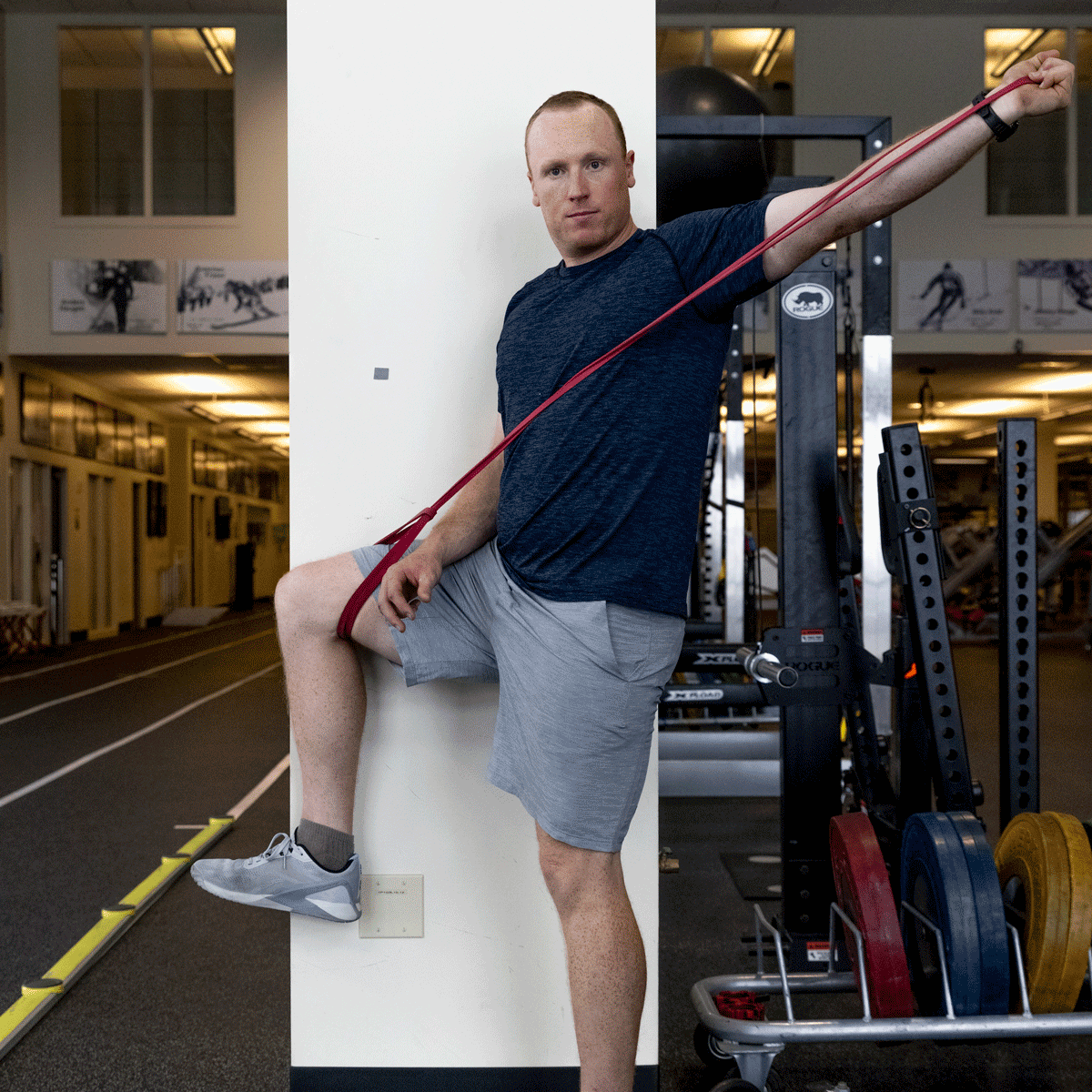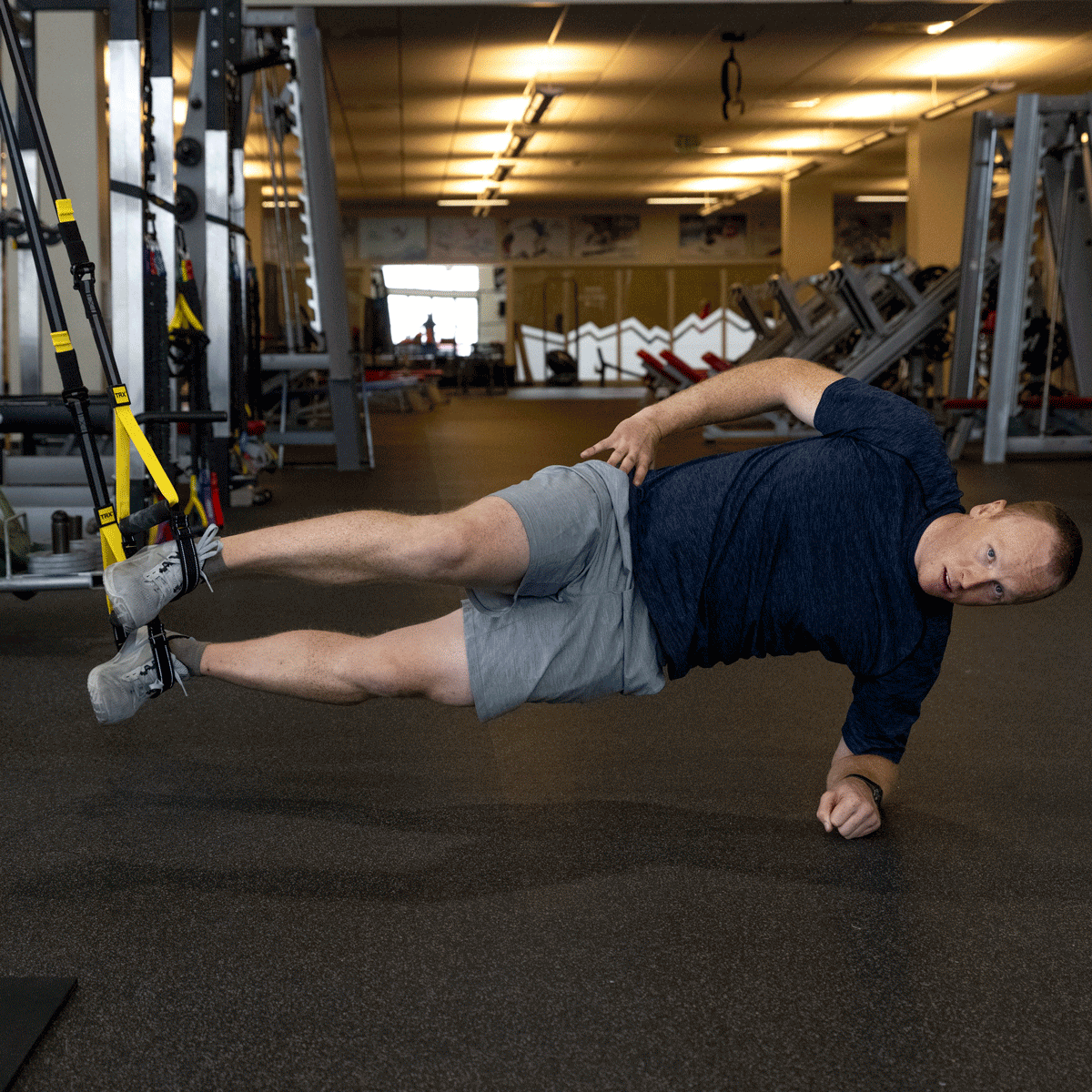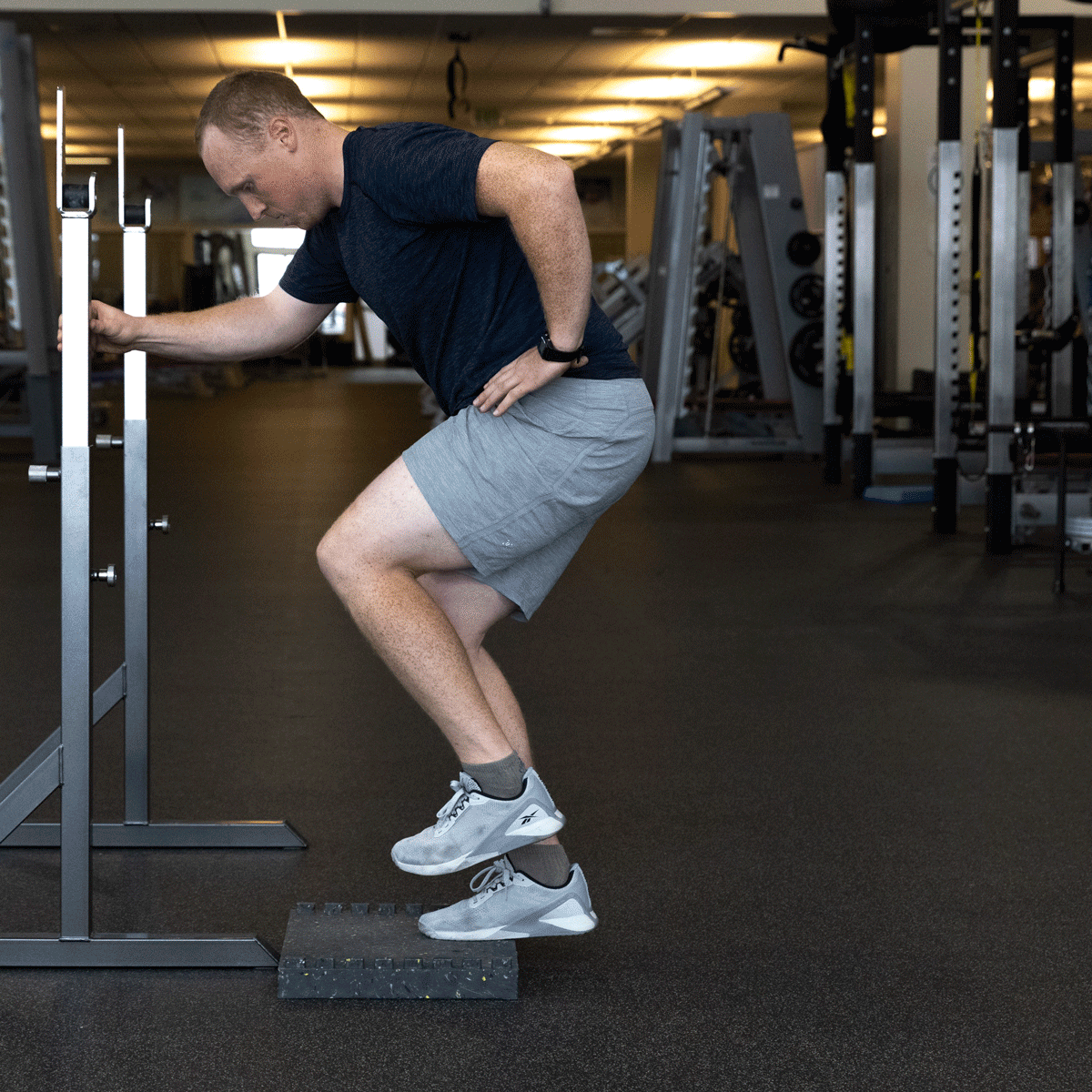Ski resorts have already opened to take advantage of early season snow, so it’s time to prepare your body for the slopes this winter.
Starting...
Ski resorts have already opened to take advantage of early season snow, so it’s time to prepare your body for the slopes this winter.
Starting a conditioning plan about six to eight weeks before your first ski trip will help you avoid fatigued legs, sore muscles and potential injury, says Per Lundstam, director of alpine sport science for the U.S. Ski & Snowboard team in Park City, Utah.
Mr. Lundstam has worked with Olympians including Bode Miller, Lindsey Vonn, Ted Ligety and Julia Mancuso. He is currently training the next crop of Olympic hopefuls, including U.S. Alpine Ski team athlete Sam Morse, as they prepare to qualify for the Winter Games in Beijing in February.
Mr. Morse, 25, an up-and-comer on the FIS Alpine World Cup circuit, specializes in the speed disciplines of downhill and Super G. He hits speeds over 80 miles an hour cruising down long, wide race courses, navigating tight turns and launching off jumps. Exercises that train the body to efficiently absorb and transfer force are a key part of his training routine, Mr. Lundstam says.
This training session was designed by Mr. Lundstam and targets the core and hip area and applies force in different directions to engage the stabilizing muscles and other supportive tissue that are used heavily in recreational skiing. Focus on technique and make sure the movements are driven from the core and hip area, he says.
As with any new workout, start slowly and add weight, reps and sets gradually. Warm up in advance, and rest between sets.
The Workout
Statue of Liberty
Why: This exercise promotes hip mobility in a range we aren’t accustomed to, which can reduce injury in the long term, Mr. Lundstam says.
How: Stand with your right hip and shoulder touching a wall, feet hips-width apart. Balance on your left foot. Lift your right leg until it forms a 90-degree bend at the knee. Contract your right glutes to actively push your outer right thigh into the wall while simultaneously engaging the inner and outer thigh muscles of the standing leg and your core to maintain balance. Hold for 6 to 8 seconds. Return to a standing position and repeat on the opposite leg for a total of 5 to 6 repetitions per leg, alternating sides. Work your way up to three sets.
Option: Loop a resistance band just above the bent knee and hold the opposite end with the hand that’s on the same side as the standing leg. The band should be stretched out across the body so the arm is straight. As you press the outer thigh into the wall, slowly pull the band above the left shoulder, to a half-Y position then bring it back down. Alternate this movement for a count of 6 to 8 seconds.

U.S. Alpine Ski team athlete Sam Morse performs the Statue of Liberty drill using a resistance band.
Lateral Low-Weight Shifts
Why: This exercise focuses on hip flexibility and joint stabilization. The transfer action requires constant contraction of the lower body muscles, which builds endurance, he says.
How: Start standing with feet wider than shoulders-width apart. Rest a weighted barbell behind the head, across the back of the shoulders. Keep the chest upright as you shift your body weight to the right until your hips are at knee-level. Pause, then shift your weight to the left side keeping the hips low. Perform 4 to 6 reps for 2 to 3 sets.
Options: If you’re at home, you can use a broom stick instead of a barbell to help maintain an upright chest. When the motion starts to feel easy, you can hold a broomstick or a light barbell overhead while shifting side to side.
Horizontal Runners
Why: This dynamic core-and-balance exercise targets the obliques and will help improve posture and hip strength, Mr. Lundstam says.
How: Lie down on the floor on your right side. Prop yourself on your right elbow. Make sure it is directly below your shoulder. Raise your hips off the floor so your body forms a straight line, knees to head. Stabilize the bottom foot as you step the top left foot forward and backward. Complete 14 to 16 repetitions. Perform two sets per side.
Options: Balance on your hand versus your elbow and extend the top arm straight up to the sky to further engage the core.

Mr. Morse performs horizontal runners with his feet in a TRX Suspension Trainer.
Low-Position Hip Articulations
Why: “This exercise helps prevent injuries in the lower back and hip joint through recruitment of the core, hip and hamstring musculature,” he says.
How: Stand near a weight rack, porch rail or anything you can grip with one hand. Hold it just below chest height with your right hand. Balance on your right foot and slightly hinge forward, maintaining a straight back. Place your left hand on your left hip and bring your left knee in toward the chest, while keeping the ankle flexed. Extend the left knee out to the left side, like a dog to a fire hydrant, then extend the leg until the foot is behind the buttocks and the sole of the left foot lifted toward the ceiling. Pause and squeeze the glutes. From here, rotate the leg to the starting position under the chest. Reverse the motion. Repeat this movement for two sets of 6 to 8 reps per leg.
Option: This exercise can become more challenging standing on a raised surface about 6 inches off the ground. Keep the weight in the forefoot and let the heel hover off the raised step. You could also bend the standing leg to 90 degrees, Mr. Lundstam says.

Mr. Morse demonstrates low-position hip articulations on a raised surface.
Single-Leg Romanian Dead Lift with Cable Machine Rotation
Why: The single-leg Romanian deadlift works all of the muscles on the backside of your body, while also working balance and stability, Mr. Lundstam says. By adding the rotation, you improve transfers of force from lower to upper body, and there’s the added challenge of working in opposing directions.
How: Stand with your right hip facing a cable machine or a resistance band securely attached to the knob of a closed door. Grip the cable or band with your left hand and step to the left until you feel resistance. Balance on your right leg as you pull the cable up and across the body to form a half Y-shape. Slowly bend at the hips as you extend your left leg straight behind you, and lower your torso until it is almost parallel to the floor. Simultaneously allow your left hand to move under your chest toward the anchor. Pause, and engage the core and shoulder muscles to pull the cable out and up again as you rise to stand. Repeat 10 reps per leg for two sets.
Option: Lift the knee higher in the upright position for an added challenge.

Mr. Morse does single-leg Romanian deadlifts with a cable machine rotation.
Split Squat With Weight Rotation
Why: Performing this hip-stabilizing exercise with load will help improve balance and coordination, while working the deep hip musculature, he says. It can also help reduce the risk of lower back injuries, he adds.
SHARE YOUR THOUGHTS
What are your favorite winter workouts? Join the conversation below.
How: Stand in a lunge, with your right knee bent at 90 degrees and back left foot elevated, pushing against a wall. The ball of the back foot could also rest against a bench or chair. Hold a weighted plate or weighted object overhead with straight arms. Push the back foot into the wall as you maintain a straight spine and rotate and lower the weight down the right hip. Engage the core to keep your hips even. Raise the weight back overhead, then lower to the left hip. Repeat two sets of five reps per leg.
Option: Make this more difficult by placing the front foot on an unstable surface like a pillow.
Write to Jen Murphy at workout@wsj.com
"six" - Google News
October 30, 2021 at 05:00PM
https://ift.tt/3CurHIt
Six Exercises to Get You Ready for the Winter Ski Season - The Wall Street Journal
"six" - Google News
https://ift.tt/3dcBbL9
https://ift.tt/2Wis8la

No comments:
Post a Comment